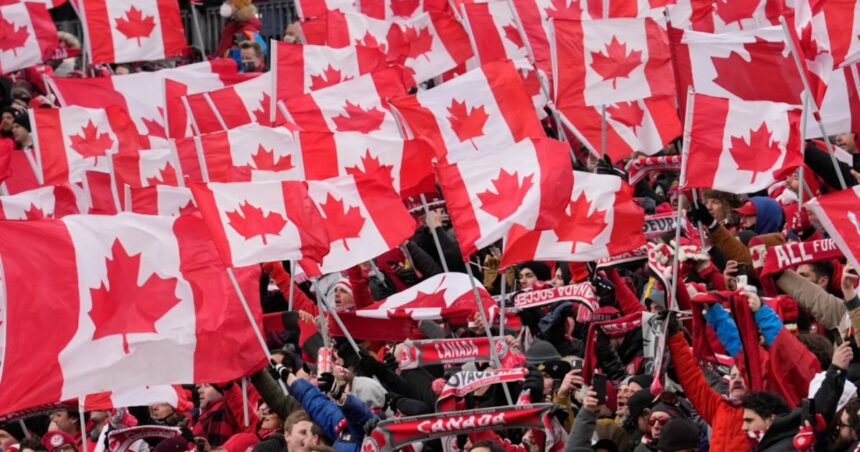As the summer heat begins to lift in Toronto, a quiet buzz is taking hold among residents and city officials alike. In just under a year, our city will join a select global community hosting the most-watched sporting event on the planet.
Walking through Exhibition Place last Tuesday, I watched crews already marking preliminary boundaries for what will become one of Toronto’s most ambitious sporting transformations. BMO Field, typically home to 30,000 cheering Toronto FC fans, will soon undergo a $300-million expansion to accommodate FIFA’s strict World Cup standards.
“We’re not just hosting soccer matches,” explained Alexandra Fitzgerald, Toronto’s World Cup planning coordinator, during our interview beside the future fan festival grounds. “We’re welcoming the world to experience our city at a time when community connection has never been more needed.”
The numbers behind this sporting spectacle are staggering. According to projections from the Toronto Host City Committee, the city expects approximately 200,000 international visitors during the tournament window, with economic benefits potentially reaching $307 million. These figures represent more than statistics – they reflect real opportunities for local businesses still recovering from pandemic-era losses.
Mohammed Khalid, who runs a family restaurant in Liberty Village, expressed cautious optimism when I spoke with him about the upcoming influx. “After what we’ve been through, this could be the boost we need. But the question is whether small businesses like mine will actually feel these benefits or if they’ll just flow to the big hotels and chains.”
Khalid’s concern echoes conversations I’ve had with dozens of small business owners across the city. While City Council approved a $90-million hosting plan last year, many community members wonder if preparations will include economic safeguards for neighborhood enterprises.
The transformation extends beyond BMO Field. Five training facilities across the Greater Toronto Area are slated for upgrades, including facilities at York University and Centennial Park. Transit systems will undergo temporary reinforcement, with the TTC planning extended hours and additional service on match days.
What separates Toronto’s approach from previous host cities is the emphasis on creating a lasting community legacy. Deputy Mayor Jennifer McKelvie told me during a City Hall briefing that infrastructure improvements would prioritize post-tournament community access.
“Every facility upgrade, every transportation enhancement – we’re designing with July 2026 in mind, but also with an eye toward the next twenty years of community use,” McKelvie said. “The World Cup provides the catalyst, but Torontonians will be the long-term beneficiaries.”
Not everyone shares this optimistic view. A recent report from the Canadian Taxpayers Federation questioned whether the $300-million price tag will deliver promised returns. Their analysis of previous sporting events suggests host cities often overestimate economic benefits while underestimating costs.
When pressed on these concerns, Tourism Toronto representatives pointed to the 2015 Pan American Games, which successfully leveraged international attention into sustained tourism growth. Official statistics from Ontario’s Ministry of Tourism showed a 4.5% increase in international visitors in the 18 months following those games.
Beyond economics, cultural preparations are also taking shape. The city has launched a multilingual volunteer recruitment program targeting 4,000 local participants, with priority given to residents from underrepresented communities.
Amara Nesbit, a community organizer from Scarborough, sees this as a critical opportunity. “Sporting events like this often happen to communities rather than with them,” she explained while overseeing a youth soccer clinic at Woburn Park. “Our goal is to ensure neighborhoods across Toronto feel ownership of this moment, not just downtown.”
The challenge facing organizers extends beyond logistics. Toronto shares hosting duties with Vancouver as the only Canadian cities among the 16 North American hosts. This means our city carries the weight of national representation alongside local pride.
I witnessed this dual responsibility firsthand at a recent town hall meeting where residents debated how distinctly “Canadian” the Toronto experience should be versus showcasing our unique multicultural identity. The conversation revealed the complex relationship between civic and national pride that often emerges during international spotlights.
For everyday Torontonians, practical questions dominate: Will ticket prices be accessible? How will daily commutes be affected? Can the city manage the security requirements without creating a fortress-like atmosphere?
City officials have promised transparency as plans develop, with quarterly public updates scheduled throughout 2025. The next briefing, set for January, will detail transportation management and accommodation strategies.
“This isn’t just about soccer,” remarked lifelong Toronto resident Carlos Menendez, who attended three previous World Cups as a fan. “It’s about showing the world who we are. The matches last 90 minutes, but the impression we leave lasts forever.”
As preparation timelines tighten and construction crews become more visible across the city, Toronto’s World Cup identity is slowly taking shape. Whether measured in economic impact, infrastructure improvements, or civic pride, the tournament’s true legacy will ultimately be determined not by FIFA officials or political leaders, but by the communities that call Toronto home long after the final whistle blows.






